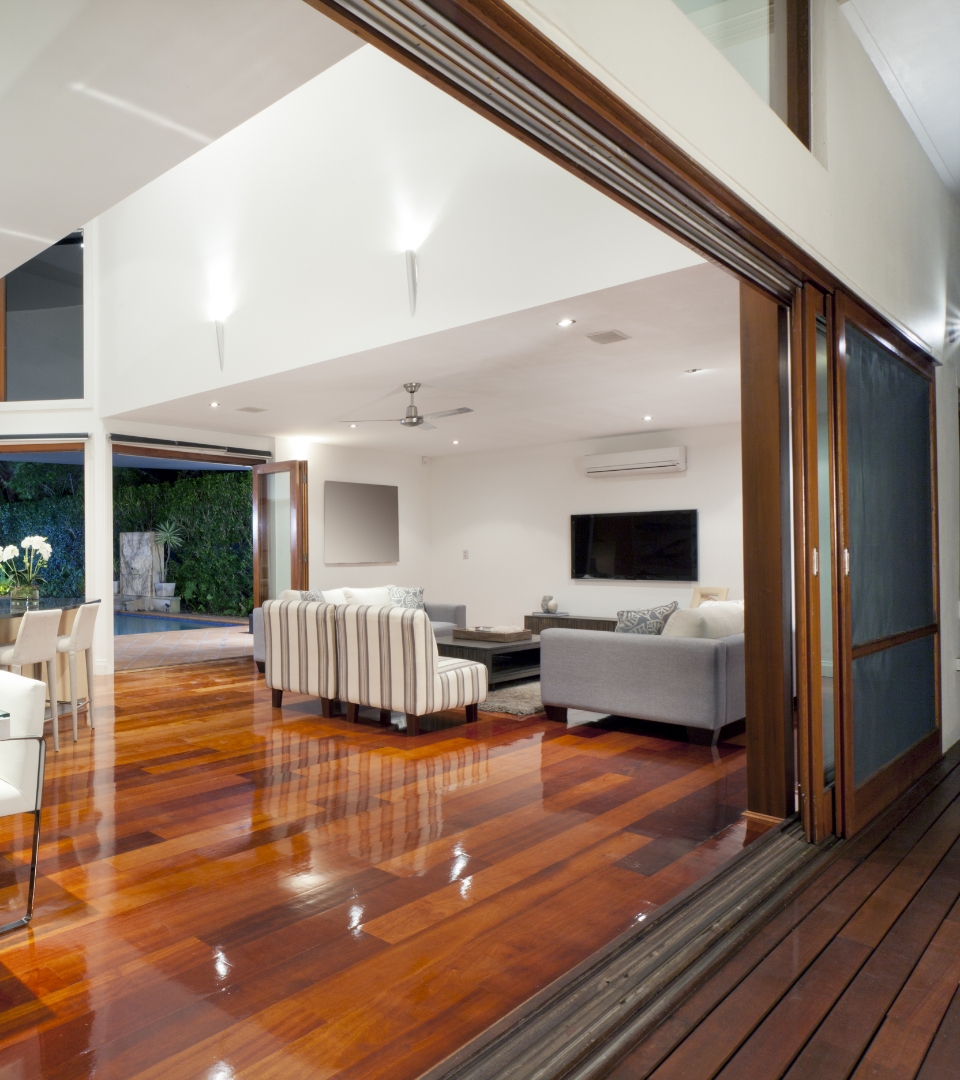RMC specialise in the production and installation of high quality, energy efficient and secure composite, timber and UPVC windows and doors. We offer window and door solutions to meet all tastes, budgets and building restrictions. From beautiful, natural looking, weather treated timber to completely maintenance free UPVC, our windows and doors are guaranteed to keep your house warm and secure.
Search Results for: double glazing
Scotia Double Glazing Limited – Trade Center Kilmarnock
Scotia Windows & Doors Manufacture & Supply
Scotia have manufactured and installed high quality Double Glazing since 1983 and provides employment for over 220 people working from our 150,000 sq ft double factory campus in Ayrshire for Scotland. We have Office/Factory locations Ayrshire & Alva (Clackmannanshire) to serve our ever increasing client base.
Scotia Double Glazing Limited – Trade Center Alva
Scotia Windows & Doors Manufacture & Supply
Scotia have manufactured and installed high quality Double Glazing since 1983 and provides employment for over 220 people working from our 150,000 sq ft double factory campus in Ayrshire for Scotland. We have Office/Factory locations Ayrshire & Alva (Clackmannanshire) to serve our ever increasing client base.
Scotia Double Glazing Limited
Scotia Windows & Doors Manufacture & Supply
Scotia have manufactured and installed high quality Double Glazing since 1983 and provides employment for over 220 people working from our 150,000 sq ft double factory campus in Ayrshire for Scotland. We have Office/Factory locations Ayrshire & Alva (Clackmannanshire) to serve our ever increasing client base.
Double Glazing Doctor
West Country Windows (Double Glazing) Ltd
The Leading Window Company with 47 Years of Trust.
West Country Windows is one of the leading Window Companies with a reputation for providing quality products and solutions to enhance the fabric of your home for over 47 years, our experience, knowledge, and service are unsurpassed. We only supply and install quality Windows, Doors and Conservatories, offering highly insulated and fully weather resistant door and window frames, delivering the best in technologically advanced glazing systems. Whether you are looking for a new Conservatory or an update on your windows or doors, West County Windows have a solution that is just right for you. We just make things better.
West Country Windows (Double Glazing) Ltd
SDL Glass & Glazing Limited
SDL Glass & Glazing Ltd in Essex supplies and or installs high quality and reliable aluminium and PVC double glazing window installation. We cater to both commercial and residential buildings.
You can also rely on us to provide superior quality Composite doors, Bi-folding doorsets, French doors, Patio doors and ancillary products.
SDL Glass & Glazing Ltd supply, design and install a range of quality conservatories. You can discuss your specifications with us so we can ensure your conservatory suits your needs.
Get in touch with SDL Glass and Glazing Ltd for all your windows, doors and conservatory services across Essex. We will be happy to help you with all your requirements.
Cornwall Glass & Glazing Limited
Cornwall Glass Penzance, formerly Ray’s Glass Centre, is the group’s most westerly branch. Offering a comprehensive choice of glass and glazing products and services in and around Penwith, Halye, St Ives and the Isle of Scilly.
With a large range of high quality goods including, replacement double and triple glazed window units, bespoke and framed mirrors, glass shelving, glass balustrading and painted glass splashbacks we can help you design exactly what you want.
Homechoice Glazing Limited
With over 20 years combined experience in the industry of window and door installers, rest assured you are in good hands with HomeChoice.
At HomeChoice Glazing Limited, we specialise in the supply and fit of a wide range of made-to-measure windows, doors, and roof lanterns throughout Kent. Energy-efficient, secure, and stylish, our double glazing offers the very latest technologies and engineering, so we can provide clients with quality products at unbeatable prices.
Our team of highly-skilled windows and doors specialists has over 20 years of experience in the trade. We work with homeowners, builders, architects, property managers, construction companies, landlords, and others to bring them the latest generation of glazing.
Ideal for residential, commercial, and new build properties, our products are sourced from leading manufacturers including Rehau, Real, Skypod, Virtuoso, and Vista. Whatever your plans, we offer a full design, supply, and fit service on a complete range of windows, doors, and roof glazing.
Whether you are looking for advanced and slimline aluminium bifolds for a new extension, a replacement uPVC window for your house, or complete glazing for a new build property, we are the team to call. Our expertise means you will get more for your money.
For more details or to discuss a project, please call now on 01233 367 074.
K Glazing Limited
As specialist glaziers, we have over 30 years’ experience manufacturing and installing double glazing with unique and high performance glass. We offer bespoke products that national window companies can’t, with a high level of detail and personal service.
Our professional and reputable installers offer double glazing installation and repairs across South and West Yorkshire from Pontefract, Wakefield and Castleford to Doncaster and Barnsley.
Energy Efficient Glazing: A Useful Guide
In any property heat will be lost through windows and doors, however this heat loss can be reduced when a home has energy efficient double or triple glazing.

Energy efficient glazing helps keep heat inside the home and, in combination with other home energy efficiency measures (such as cavity wall insulation, loft insulation and an energy-efficient heating system), can lead to a reduction in annual heating bills.
And that’s just the start. The benefits of having energy efficient glazing installed in your home can also include a reduced carbon footprint, improved home security and noise reduction.
If you’re considering investing in energy-efficient glazing, you’re certainly not alone. There’s a lot to gain from this home improvement, but of course there is also a lot to consider.
This short guide will take you through some key information that will help you make an informed decision.
What is energy efficient glazing?

Energy-efficient glazing is the term used to describe glazing consisting of two or more glass panes within a sealed unit. This includes double and triple glazed windows and similar units found within doors.
Energy-efficient windows and doors consist of a framing material (timber, aluminium, PVC-U or composite) into which one or more glass sealed units are fitted according to the style of the window or door.
Energy-efficient glazing is rated according to its ability to reduce the amount of heat that can pass through the window, the capacity for sunlight to travel through the glass unit, and the capacity for air to move through the unit.
Commonly, the highest-rated glazing according to efficiency is made with Low-Emissivity Glass which has a special coating on the inner surface of one pane, enabling light to travel through whilst reflecting heat back into the room.
What is in between the glass panes of a sealed unit?
The air gap limits the amount of cold air able to get into your home. It does this by acting as an insulator and is completely sealed.
The space between the glass panes is filled with air or gas such as argon, krypton or xenon. These help reduce heat loss through the unit. When gas such as argon – which has low conductivity – is used within this space, the window is then even more efficient at keeping heat inside the property and also at interfering with sound waves from inside or outside the house, reducing noise pollution.
Sealed units also have a strip in between the panes, made from metal or polymer. This strip is called a spacer which can contain a drying agent that deals with any moisture that is trapped in the space between the sheets of glass.
The type of frame material used
As with the glass itself, the frame material used in energy-efficient windows and doors is also important.
There are several options here:
- PVC-U has many benefits including performance longevity (usually 20 years or more) and is recyclable.
- Wooden frames are environmentally friendly and are often specified for properties where the use of original materials is necessary, such as those within a conservation area.
- Aluminium frames are an eco-friendly, modern choice because the creation of the material is low impact, recyclable and the slim look of the frames is desirable.
- Composite frames are composed of a combination of wood and aluminium or plastic.
Energy rating and u-values
For ease of purchase, certain window manufacturers label the energy efficiency of their windows with an energy rating ranging from A++ to C, A++ being the most efficient. This rating system has been developed by the British Fenestration Rating Council (BFRC) and it takes into consideration the entire window.
When this energy rating is given, a whole window u-value is also calculated. The u-value refers to how easily heat can pass through the unit. The u-value scale works in the opposite way to an energy rating, in that the higher the u-value, the more easily heat can pass through the window and the window is less efficient.
The benefits of energy-efficient glazing
There are many benefits of EEG, which are increasing all the time as technology and building techniques advance, and our eco-awareness increases.
Key benefits include:
- Improved energy efficiency: Energy-efficient glazing may form part of a wider range of energy-saving measures. If your home also contains cavity wall insulation, loft insulation and an energy-efficient heating system, these can all work together to reduce the amount of energy needed to heat your home. As a consequence, you can enjoy lower energy bills and a reduced carbon footprint.
- Reduced noise pollution: Sealed double and triple glazing can be effective at reducing medium to high-frequency noise, creating a more comfortable, private and peaceful home environment.
See more: Glazing and noise reduction in homes
- Improved thermal insulation: Energy efficient glazing can help to keep your home warmer in winter and cooler in summer. The air or gas gap between the panes of glass in a sealed unit provides an extra layer of insulation. This increased thermal resistance reduces the amount of heat that can escape the home during the colder months. In summer the reverse occurs, and the windows help keep the heat outside, keeping the home cooler.
- Reduced condensation: Energy efficient windows and doors help reduce the risk of condensation which occurs when a cold surface and moist air meet. The resulting moisture can potentially damage the window frame and if it is particularly bad, may even affect other areas of the room.
See more: How double or triple glazing helps reduce condensation
- Safety and security: As there are two or more panes instead of one, energy-efficient glazed windows offer a more secure barrier against unwanted entry than a single glazed window. The level of security can be enhanced further when laminated glass is used.
- Cost savings: Assuming all other measures have been taken, Installing energy-efficient windows can save you money over the long term by reducing the amount of energy required to heat your home.The savings you gain from energy-efficient glazing will depend on a number of factors, including the size of the home, the type of windows you purchase and your energy supplier. For an indication of the potential savings, you could enjoy based on your home and windows.
- A more comfortable living environment: Lower heat loss, plus reduced noise, helps toward a feeling of a much more comfortable home.
- Increased home value: Making energy-saving improvements to your home has the potential to boost its value. Potential homebuyers are increasingly aware of the eco-credentials of any house they consider purchasing. According to a report conducted by the Government based on property sales made between 1995 and 2011, a homeowner making energy-saving improvements to their home could see a 14-38% increase in value as a result.
A note on the importance of ventilation
In newer dwellings with higher-efficiency insulation, a lack of adequate ventilation can increase the risk of condensation forming on internal surfaces – including on windows and other glazed surfaces. A way of reducing this risk is to ensure each room has adequate ventilation, such as trickle ventilators or other forms of ventilation.
Continuous improvements in frames, glass and gas combinations mean the consumer’s energy-efficient window choice is increasing all the time. Energy-efficient glazing is a beneficial addition to any modern
Glazing and noise reduction in homes
Replacing or upgrading your windows can improve noise reduction in the home.

What is noise?
Noise is unwanted sound. In the home, this is any sound that distracts or disturbs the occupants.
This could be anything from nearby traffic or low flying aircraft to sounds coming from neighbouring properties such as music and loud conversation.
How it travels
Sound travels through the air (and solids and liquids) like the ripples seen on the surface of a pond when you throw a stone into it. Just like these ripples, the waves decrease in intensity as they move away from the source.
Sound intensity is measured in decibels (dB). A low dB value indicates a soft sound and a high dB value a loud sound.
How it affects us
The perception of noise will vary from person to person depending upon the source of the noise and the individual’s tolerance/acceptance of a given type of noise.
For example, a person living next to a busy road for a number of years may have become accustomed to it, whereas someone relocating from a quiet location to the same busy road may find the noise a nuisance.
How glazing can help reduce noise
One of the many potential benefits of replacing windows or installing secondary glazing in your home is that in doing so you can often also improve your property’s noise insulation.
The correct installation of good quality, well-made windows or secondary glazing systems can result in a noticeable reduction in noise levels.
Type of glass

The type of glass used within your replacement window could have an effect on the level of noise reduction. Glass is available in a range of thicknesses and typically thicker glasses reduce more noise.
Domestic windows usually use 4mm-6mm thick glass. Some window panes are made up of two or more pieces of glass that have been bonded together; these are known as laminates. Specialist, acoustic laminated glass is available from many glass manufacturers.
Thickness of glass

Different thicknesses of glass are effective at reducing noise at different frequencies. As a result, a sealed double or triple glazed unit with glass panes of different thicknesses (i.e. both 4mm and 6mm) will be effective at reducing noise across a wider range of frequencies than if both panes of glass were the same thickness.
Triple glazing
In addition to reduced thermal losses, triple glazed units can provide a reduction in noise. By increasing the combined thickness of the glass within the unit, the mass is increased. A reduction in noise transmission will result from this additional mass.
Air gap
The size of the air gap between the panes of glass in either a double or triple glazed window or a secondary glazing system makes a significant difference to the level of noise insulation. Typically a large air gap will improve noise insulation.
Secondary glazing

Secondary glazing is when another window or glazed screen is positioned within the window reveal of an existing window.
The extra glass pane and air gap now present in the window unit help to improve its noise insulation properties. In some cases, noise reduction can be further improved by lining the window reveal with sound insulation material.
The effect of ventilation and air gaps on noise reduction
To be effective in reducing noise new windows and secondary glazing systems must be fitted and sealed correctly. Any air gaps around your window will seriously affect its noise reduction properties.
It is also important that any opening window can be securely closed with a good quality seal. If the window does not close correctly noise will be able to infiltrate the property.
Bear in mind that many windows are designed to provide your property with a means of ventilation. Background ventilation through trickle ventilators can, if left in the open position, provide a passage for sound to travel.
Likewise, an open window, perhaps in the night lock position, will not aid sound reduction.
Glazing may only be part of the solution
Replacing or upgrading the glazed elements of a home may not singlehandedly solve the problem of excessive noise levels.
This is because noise entering the home via roofs, walls and floors will not be reduced as a result of changes to glazing. Depending upon the source of the noise and type of property, replacing or upgrading the glazing may only be part of the solution.
It is important to discuss your requirements and your expectations with the window installation company.
By explaining the source of noise that you are trying to reduce, the glazing company can advise you on what can be achieved.
The dB reductions possible using the various methods can be supplied by your glazing contractor. Any claim of noise reduction should be backed up by test evidence.
GGF Members will be able to advise you on the most suitable glazing option to reduce noise in your home – find a local GGF Member company.
What is secondary glazing?
Secondary glazing can provide a cost-effective and efficient way of improving the heat retention, sound reduction and security of your windows.
Secondary glazing involves installing a “secondary” window, i.e. a fully independent internal window, on the room side of your existing primary window.
Fitting an internal secondary window forms double glazing with your existing single glazed window. The secondary window is a separate unit consisting of a single glazed pane within its own frame and is fitted on the room side of your existing windows and sealed around the edges.
The range of secondary windows includes horizontal sliders, vertical sliders, top hung, side hung, double side hung, lift-outs, and removable fixed panels fitted onto the back of doors.
What are the benefits of secondary glazing?
Secondary glazing is a cost-effective way of improving heat retention and sound reduction in your home, as well as providing some additional security.
It can be a great less expensive alternative to replacing double or triple glazed primary windows.
Secondary windows units usually have separate handles and open so that you can get access to clean and open your primary windows.
Secondary glazing can result in significant cost savings
Secondary glazing is considerably cheaper and easier to fit than replacement windows because it doesn’t require complete removal and replacement of your existing windows.

Heat loss is reduced with secondary glazing
A major long-term benefit of secondary glazing is heat retention properties. This is because it adds a second layer of glass behind your existing primary windows that reduce both the amount of warm air that can escape from your home and the amount of cold air that can enter.
The heat generated from your heating system will remain inside rather than escaping through inefficient windows, and there will be fewer draughts, making you feel warmer. Your heating bills could drop substantially as your home becomes more energy efficient, great for you and great for the environment.
Experience less external noise with secondary glazing
Secondary glazing also acts as an extra physical barrier against outside noise, reducing the amount of sound coming into your home through (closed) windows.
This noise reduction can be further improved by installing special sound-reducing laminate glass, or by having a gap of at least 100 mm between the secondary and primary window and lining the window head and reveals in between with acoustic tiles.

Extra protection for your existing windows
Secondary glazing means your existing primary windows do not need to be removed, and there are many reasons why you might need to retain your original windows.
This is particularly useful in listed buildings, buildings in areas where they are subject to an Article 4 Directive, and areas where planning permission rules do not allow any aesthetic changes whatsoever to the external primary windows.
These older properties are often draughty and adding secondary glazing that doesn’t require any planning permission may be the only effective way to reduce heat loss and improve sound insulation.
In other circumstances where windows cannot be replaced or where you don’t have the budget to replace them, secondary glazing can provide an alternative solution. It’s also a great cost-effective option for rented accommodation.
Secondary glazing is low maintenance
Secondary glazing is low maintenance and doesn’t cause the same level of disruption as fitting replacement primary double or triple glazed windows, and can last for many years.
Braham Glazing Limited
When it comes to finding a double-glazing company that does it all, look no further than Braham Glazing Ltd. We are one of the area’s most trusted suppliers and installers of windows, doors, skylights, and conservatories – and for your absolute peace of mind. All of our work is fully guaranteed!
Mark Smith Glazing Ltd
Founded in 1997 Mark Smith has earned a deserved reputation for quality craftsmanship, competitive and transparent pricing, reliability and sensitivity to his customer needs. Above all, Mark has a dedicated, experienced team to back up this reputation.
We will competitively quote for all domestic and commercial glass and mirror work including double glazing, sash and case windows, shop fronts, patio doors, balustrades and balconies and energy efficient windows.
Mark Smith Glazing expanded in 2006 purchasing what was (previously J&B Windows). Our products include UPVC, Aluminium Windows and Doors and roof lights.
Empire Glass and Glazing Limited
Empire Glass are a leading family-owned glazing contractor, glass merchant, processor and decorator with offices in Southwark and factory conveniently located in the village of Laddingford, a stone’s throw from Tonbridge.
We operate Monday to Saturday 8am to 6pm assisting domestic, commercial and construction customers across every London postcode and the whole of Kent providing free site surveys, expert advice and emailed quotations so feel free to get in touch as we`re always happy to help, even if it’s just for advice.
Empire are one of the UK’s most rated and reviewed glazing contractors gaining over 200 five-star reviews across Google, Trustatrader, Yell and Thomson’s. Our reviews are complimented by fully uniformed glaziers with company ID badges arriving in clean well-equipped sign written vans.
Empire are one of only a handful of “proper” glazing companies exclusively undertaking glazing projects, with regards to glass, we do it all. Our works are varied ranging from a small single glazed window or double-glazed conservatory repair on behalf of a local domestic customer through to a large replacement high rise double glazed unit or 100 shower doors for a large hotel chain in London’s West End.
There’s not much we can’t usually help with in the way of glass or the related so get in touch whether it be domestic, commercial, construction, large/small, basic or complex!
It’s worth visiting our website and Instagram @Glasshelpdesk as these both show in detail and step by step the extensive range of products and services we offer whilst we actually undertake the work so no need to take our work for it!
Empire take training, safety and appearance seriously, as such, all glaziers are trained in all the following disciplines: First Aid, Ladder Trained, IPAF, PASMA and CSCS.
For customer peace of mind Empire Glass are Trading Standards recommended plus members of The Glass and Glazing Federation (GGF), Made in Britain and Safe Contractor and Construction Line approved.
We`re active on Instagram posting most days so why not follow us @GlassHelpdesk for glazing and @Empiredecrotive for decorating to us to see what were up to……
Glazing improvements for the environment
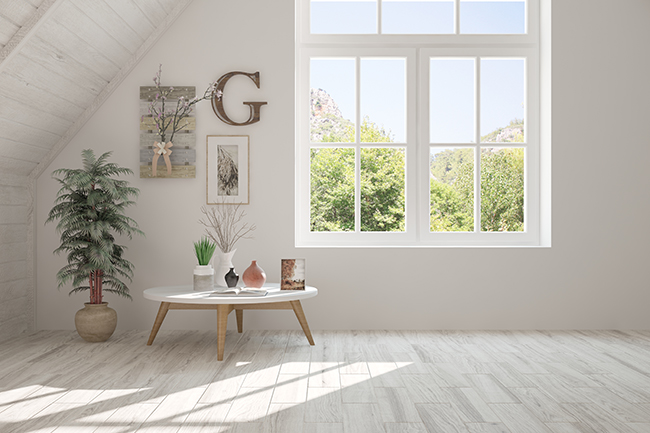

If you’re planning a home improvement there are various measures you can implement to make your home more energy-efficient, warmer and healthier. Making the right and smart decisions on home improvements can reduce your environmental footprint, cut down your energy bills and increase the value of your property. Research we recently commissioned revealed that 85% of UK homeowners will be scheduling work on their properties in the near future, with 19% exploring extensions or work to create more space, while 14% are looking to make a specific energy-efficient home improvement. Furthermore, 40% of homeowners and renters across the UK admit they wouldn’t view or buy a potential new home that didn’t have double or triple glazing, energy-efficient doors, insulation or low carbon heat.
Energy-efficient upgrades are no longer just a ‘nice to have,’ they can make a significant difference to the energy performance of a property and ultimately create large cost savings on household bills – especially if you decide on a whole house approach to improving your home’s efficiency.
The best home improvements to reduce your household’s environmental footprint include:
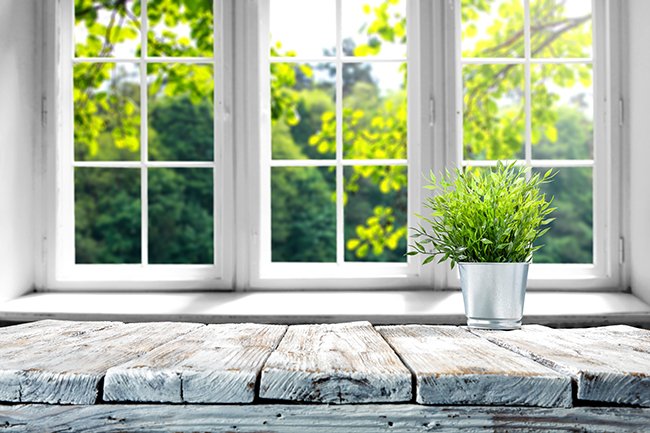
1. Energy-efficient glazing
If you’re planning renovations and want to increase your home’s energy efficiency, improve your lifestyle, save on energy bills and help the environment, installing energy-efficient windows is a must. Up to 24% of heat energy can escape from old, draughty glazing. When it comes to kitchens and bathrooms particularly, it’s also important to remember that these rooms typically have more moisture so you should ensure you have good ventilation. There are countless benefits to good home ventilation including reducing odours and water vapour from cooking, washing and bathing, as well as reducing condensation and mould which could also reduce damage to your décor and potential health problems for asthma and allergy sufferers. Good ventilation also ensures fresh air can enter your home, while stale air can escape to keep your indoor atmosphere healthier.
If your double or single glazing is more than 20 years old in other parts of your home, it is also unlikely to be as energy-efficient as modern glazing. As in the last 20 years advanced technological innovation has seen energy-efficient glazing significantly develop, from specialist glass types through to improved double and triple glazed windows and doors, which can save over 50% in fuel bills.
2. Energy-efficient doors
Thinking about investing in new external French, patio or bi-folding doors? When it comes to exterior doors, there are various different factors that could be impacting their environmentally friendliness. For instance, do your doors have modern glazing in them? Are they single, double or triple glazed? What materials (e.g., wood, plastic (UPVC), steel, aluminium or composite – a combination of materials) are the doors made from? Are your door frames sealed correctly? All of these factors have a significant effect on your household’s carbon footprint. Upgrading your older doors for newer, more energy-efficient alternatives can really reduce your energy consumption and bills.
It’s worth noting that homes can lose almost a quarter of their heat through inefficient windows and external doors, so installing high thermal performance doors can be a great way to reduce heat loss and keep the warmth in your home. By installing energy-efficient doors you can also improve your household’s environmental footprint and reduce your heating bills. In addition, thanks to modern technology they are also highly energy-efficient, and can now be double or triple glazed.
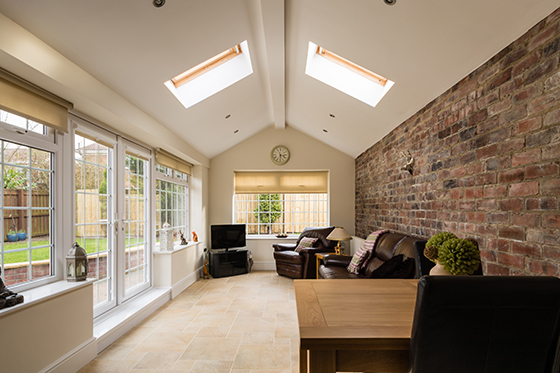
3. Insulation
If you’re planning to extend your home or convert your loft, insulation is a must – and is another popular route to make your home more energy-efficient. Insulation essentially reduces the exchange of heat (both gain and loss) through the surfaces of the property. From cavity wall insulation to loft insulation or underfloor insulation, there are a range of options available to ensure your home is cool in the summer and warm in the winter, reducing your carbon footprint and of course your energy bills all year round.
4. Low carbon heat
The use of oil/gas heating systems and hot water in our homes accounts for around 15% of the UK’s greenhouse gas (GHG) emissions, but there are ways to reduce your carbon footprint when it comes to heating your home. From air source heat pumps to water source heat pumps, there are various different low carbon heating avenues to explore to help your household contribute to tackling the climate crisis. Heat pumps are essentially an alternative to boilers and run off electricity (as opposed to gas) to heat your home/water. It’s also worth noting that they don’t produce carbon emissions while operating, unlike gas boilers.
When making the decision to improve your home to make it more energy-efficient, the key thing is to adopt a whole house approach. If you only opt to invest in one element, you won’t be getting the benefit of making your whole home energy-efficient. For example, it’s less beneficial to have loft insulation installed if your windows and doors are letting heat escape because they are old and leaky. Long term, the investment in improving your property will pay off if you have made sure that your whole house is well insulated and ventilated. Not only will you see a difference in your bills, but also in your overall health and wellbeing. By making smart home improvements you’ll also be helping to improve the environment for the future.
If you’re planning home improvements, here are some more helpful tips.
WGS Glazing
WGS Glazing is an independent home improvement specialist which can boast more than 25 years’ experience of installing double glazing windows in Hull and East Yorkshire. A one-stop shop for anything to do with glazing; we can supply and fit contemporary composite doors, uPVC windows, orangeries, conservatories, fascia and soffits.
All About Secondary Glazing
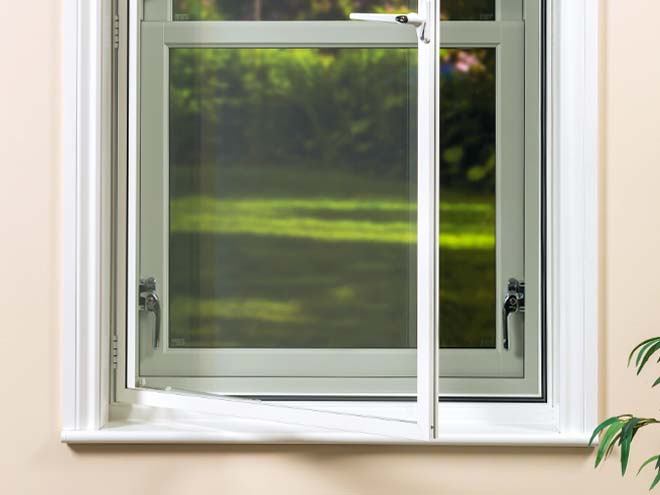
Following the Government’s inclusion of secondary glazing in the Green Homes Grant Scheme (launched 1st September), there have been many queries made to MyGlazing.com and the Glass and Glazing Federation (GGF) about the performance and qualities of Secondary Glazing.
Here’s the responses from the MyGlazing.com team in conjunction with the Glass and Glazing Federation and GGF Members Pilkington UK and Roseview Windows.
How does secondary glazing compare to replacing with windows for new double or triple glazing in terms of improving energy efficiency?
Secondary glazing when placed in close proximity to a primary window can offer good thermal improvements and increase your energy efficiency. If you live in a listed buildings often local council restrictions means that you can’t replace the original window design (and specification which is usually single glazed) with double or triple glazing so secondary glazing units can be a good alternative.
The energy efficiency performance is not as high as that of a full double or triple glazing replacement, mainly because of the huge advance in the quality of sealed insulating double and triple glazed windows and doors, however, secondary glazing can still be an effective solution.
One the most common ways of determining thermal performance in building materials is the U value, which measures how easily heat can pass through a material. Materials that allow more heat to escape from a building have higher (i.e. worse) U-values. Materials that let less heat pass through them have lower (i.e. better) U-values.
Solely based on glass U-values the table below is a reasonable measure of the difference on different window types:
| Glass type | U value (W/m2K) |
| Single pane | 5.7 to 5.8 |
| Single pane with secondary glazing (with 150mm air gap) | 2.9 |
| Single pane with Pilkington K GlassTM coated secondary glazing (with typical 150mm air gap) | 2.0 |
| Replacement double glazing unit with low E coating | 1.0 – 1.5 |
| Single pane with secondary glazing, glazed with double glazing slim unit with low E coating (not often used as cost is similar to standard double glazing) | 0.9 |
| Replacement triple glazing unit with two panes with low E coating | 0.5 – 0.8 |
The above table does not include the individual performance of frames, seals and insulation around the frames, the U values of the glass are based on typical performances.
Low emissivity (low E) coatings are microscopically thin, transparent coatings (much thinner than a human hair) that reflect long-wave infrared energy (or heat). So instead of heat escaping through the glass, a low E coating will reflect heat back into the home. In secondary glazing hard coat Pilkington K Glass™ is used to create the same effect.
The table shows the difference in thermal insulation from a single pane of glass through to a triple glazing unit with two panes of low E glass. As you can see the difference from single glazing with the addition of secondary glazing approximately doubles energy efficiency.
Many homeowners living in conservation areas and/or listed buildings who may be restricted by local authorities on installing modern home improvements, use secondary glazing as a solution to improve energy efficiency because once installed, it improves energy bills immediately. However, it is worth noting that installing double glazing or triple glazing does increase thermal performance even more significantly, by roughly 100% from secondary glazing.
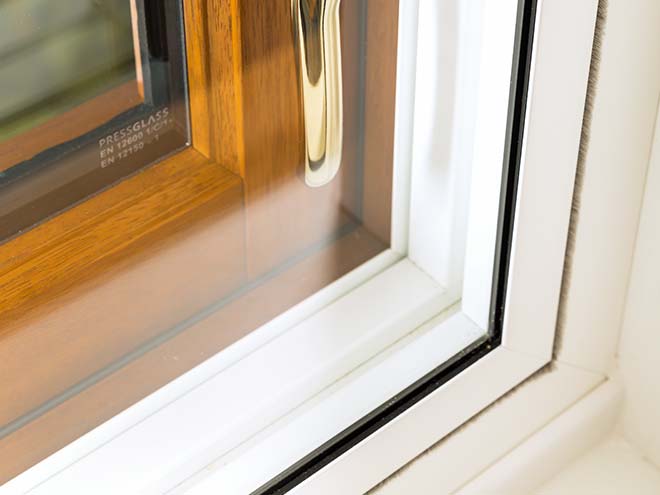
Secondary glazing can also effectively eliminate the draughts commonly found with old single glazed windows. Draughts aren’t directly measured by U value but they can of course adversely affect a building’s energy efficiency and the occupant’s comfort levels.
Being a less expensive option (approximately 50% less on a supply and install) Secondary glazing is often an easier or temporary solution for those homeowners who want to improve their energy efficiency but may not have a huge budget.
What is the average cost of secondary glazing?
Cost varies depending on the specification. Secondary glazing can be bespoke, coloured and shaped to suit the period properties they are found in. Designed to cover the existing window style and be hardly visible, the variation in styles these days includes fully tilt out to clean units. On average, a typical secondary glazing window/unit is around half the price of a double glazing window. The installation of secondary glazing is also better for acoustics, whether it’s keeping sound out or in.

When would it be beneficial to use secondary glazing over replacement windows?
Noise prevention is one of the main benefits. Secondary glazing is used extensively throughout the country to combat noise pollution. It is often fully subsidised as part of government schemes to improve living conditions in particular situations such as airport flight paths and housing in proximity of railways or highways. The noise cancelling effects of secondary glazing are particularly impressive.
Secondly in conservation areas or listed buildings where restrictions are in place. Many older public buildings like museums, schools or town halls have secondary glazing installed because the owners or local councils may have to retain the external appearance of the building. Professionally installed secondary glazing is virtually invisible from the exterior of such a property and delivers the advantages of energy efficiency and noise reduction.
Secondary glazing also offers an added layer of security and the internal finishes that can be achieved with secondary glazing are now of such a high quality, they can be a real feature of the interior design.
What are the drawbacks of secondary glazing?
Secondary glazing is not as energy efficient as a new double or triple glazing windows, though it does improve energy efficiency where there are local council restrictions. One drawback that is sometimes mentioned is the maintenance and cleaning of secondary glazing. It can mean twice as much work when cleaning, especially when double and triple glazing can also feature self-cleaning glass. However, most modern secondary glazing panels are removable and the weight of a single glazed panel is much lighter to handle when doing so.
It has been mentioned that in some situations, secondary glazing can resolve a problem with condensation. Providing an extra barrier of glass can help regulate the extreme temperature clash of cold glass pane against warm centrally heated air though it should always be well ventilated to reduce the likelihood of condensation. Secondary glazing is not the best energy efficient glazing solution, because the seals are not as airtight as those on double and triple glazing. In addition, the thermal performance of secondary glazing is very much dependent on the condition of the prime single glazed window on a building’s exterior.
Video: See secondary glazing sound reduction demonstration.
The answers provided have been supplied by the technical team of MyGlazing.com and the Glass and Glazing Federation (GGF). The information has been corroborated with research, product testing and product data from GGF Members including Pilkington UK and Roseview Windows. Video courtesy of Roseview Windows.
Evander Glazing & Locks Ltd
As the UK’s leading specialist in emergency glazing, lock replacement and door repair services, Evander carries out around 95,000 property visits each year across residential, commercial and public sector properties. With more than 300 directly employed professionals operating from 15 regional service centres, we deliver fast, expert support nationwide, often attending within hours.
Our core services include:
- – 24/7 emergency response for glazing, lockouts, boarding and make-safe situations
- – Glass repair and replacement, including single, double, triple and acoustic glazing
- – Lock replacement and security upgrades for windows and doors
- – Commercial glazing and door solutions, including shopfronts, offices and more
- – Noise insulating solutions, featuring our specialist QuietVue range
- – Insurance services, from initial emergency call-outs to full reinstatement and reporting
- – Repair and fitting of windows and doors in uPVC, aluminium and timber
All work is delivered to high industry standards and backed by FENSA accreditation and ISO 9001 certification. With over 50 years of experience, Evander is trusted by insurers, homeowners and businesses nationwide.
Evander Glazing & Locks Ltd
As the UK’s leading specialist in emergency glazing, lock replacement and door repair services, Evander carries out around 95,000 property visits each year across residential, commercial and public sector properties. With more than 300 directly employed professionals operating from 15 regional service centres, we deliver fast, expert support nationwide, often attending within hours.
Our core services include:
- – 24/7 emergency response for glazing, lockouts, boarding and make-safe situations
- – Glass repair and replacement, including single, double, triple and acoustic glazing
- – Lock replacement and security upgrades for windows and doors
- – Commercial glazing and door solutions, including shopfronts, offices and more
- – Noise insulating solutions, featuring our specialist QuietVue range
- – Insurance services, from initial emergency call-outs to full reinstatement and reporting
- – Repair and fitting of windows and doors in uPVC, aluminium and timber
All work is delivered to high industry standards and backed by FENSA accreditation and ISO 9001 certification. With over 50 years of experience, Evander is trusted by insurers, homeowners and businesses nationwide.
Evander Glazing & Locks Ltd
As the UK’s leading specialist in emergency glazing, lock replacement and door repair services, Evander carries out around 95,000 property visits each year across residential, commercial and public sector properties. With more than 300 directly employed professionals operating from 15 regional service centres, we deliver fast, expert support nationwide, often attending within hours.
Our core services include:
- – 24/7 emergency response for glazing, lockouts, boarding and make-safe situations
- – Glass repair and replacement, including single, double, triple and acoustic glazing
- – Lock replacement and security upgrades for windows and doors
- – Commercial glazing and door solutions, including shopfronts, offices and more
- – Noise insulating solutions, featuring our specialist QuietVue range
- – Insurance services, from initial emergency call-outs to full reinstatement and reporting
- – Repair and fitting of windows and doors in uPVC, aluminium and timber
All work is delivered to high industry standards and backed by FENSA accreditation and ISO 9001 certification. With over 50 years of experience, Evander is trusted by insurers, homeowners and businesses nationwide.
Evander Glazing & Locks Ltd
As the UK’s leading specialist in emergency glazing, lock replacement and door repair services, Evander carries out around 95,000 property visits each year across residential, commercial and public sector properties. With more than 300 directly employed professionals operating from 15 regional service centres, we deliver fast, expert support nationwide, often attending within hours.
Our core services include:
- – 24/7 emergency response for glazing, lockouts, boarding and make-safe situations
- – Glass repair and replacement, including single, double, triple and acoustic glazing
- – Lock replacement and security upgrades for windows and doors
- – Commercial glazing and door solutions, including shopfronts, offices and more
- – Noise insulating solutions, featuring our specialist QuietVue range
- – Insurance services, from initial emergency call-outs to full reinstatement and reporting
- – Repair and fitting of windows and doors in uPVC, aluminium and timber
All work is delivered to high industry standards and backed by FENSA accreditation and ISO 9001 certification. With over 50 years of experience, Evander is trusted by insurers, homeowners and businesses nationwide.

 Emergency Glaziers
Emergency Glaziers GGF Shop
GGF Shop MyGlazing.com
MyGlazing.com Find a GGF Member
Find a GGF Member



